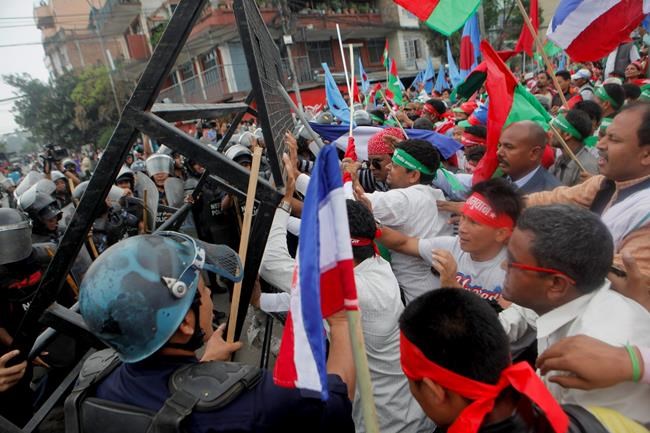Elevate your local knowledge
Sign up for the iNFOnews newsletter today!
Sign up for the iNFOnews newsletter today!
Selecting your primary region ensures you get the stories that matter to you, first.

KATHMANDU, Nepal – Supporters of ethnic minority groups demanding changes in Nepal’s new constitution clashed with police Monday and blocked main streets near the prime minister’s office, as their newly started protests entered their second day.
About 500 demonstrators gathered, chanting anti-government slogans and attempting to push through a police barricade. Riot police using batons and demonstrators with sticks briefly clashed, but no serious injuries were reported on either side.
Security was stepped up around Singha Durbar, a fortified complex in Kathmandu that houses the prime minister’s office and government offices, with hundreds of riot police guarding the streets.
On Sunday, hundreds of protesters scuffled with police and blocked a main street leading to the prime minister’s office, but no injuries were reported.
The Madhesi minority group, which is leading the protests, wants a bigger state than assigned in the constitution adopted last year. At least three other minority groups that joined the protests want separate states for their populations as well.
Nepal, with a population of only 28 million, has more than 100 ethnic groups.
Madhesi-led protests from September to February left more than 50 people dead and blocked key border points with India that resulted in severe shortages of fuel, medicine and other supplies.
Several rounds of talks with the government have failed to reach any agreement.
Want to share your thoughts, add context, or connect with others in your community?
You must be logged in to post a comment.